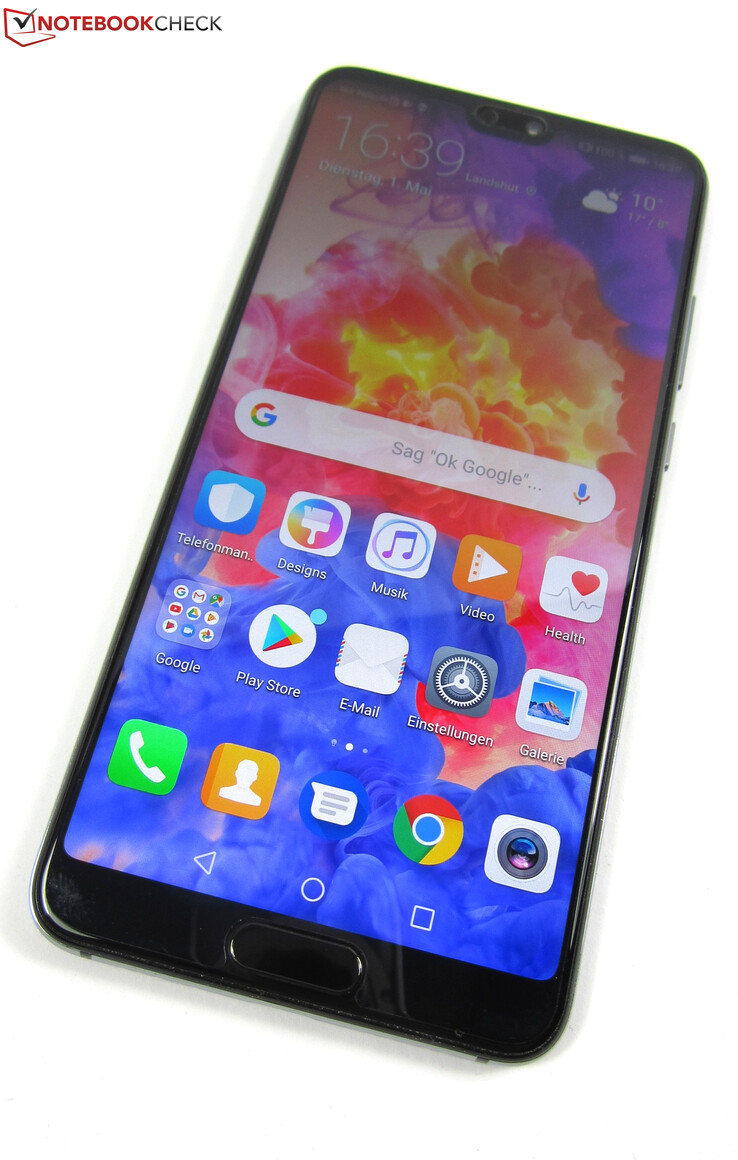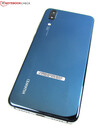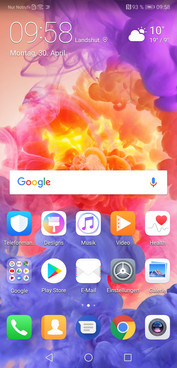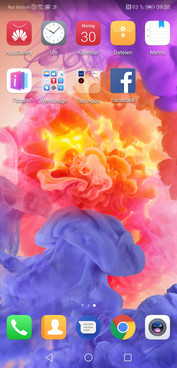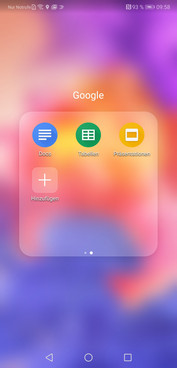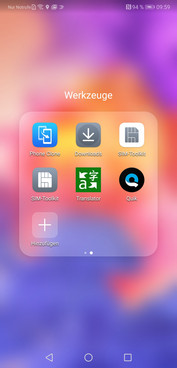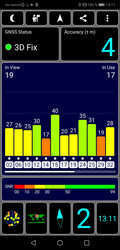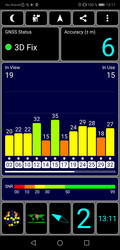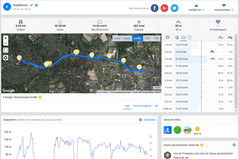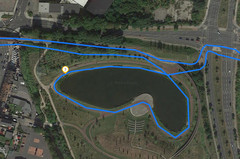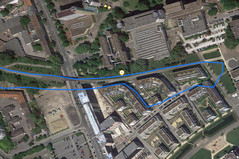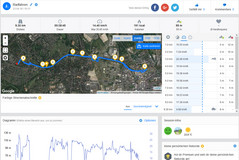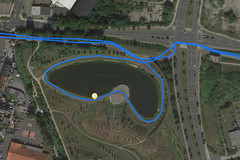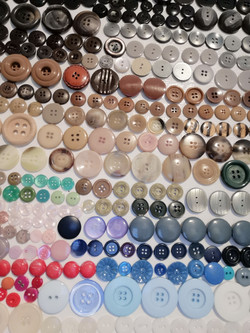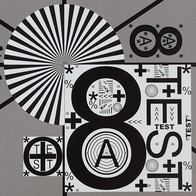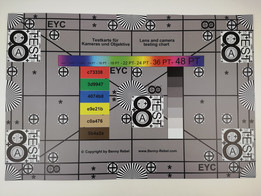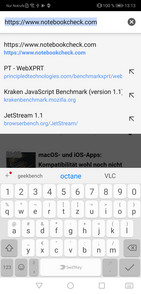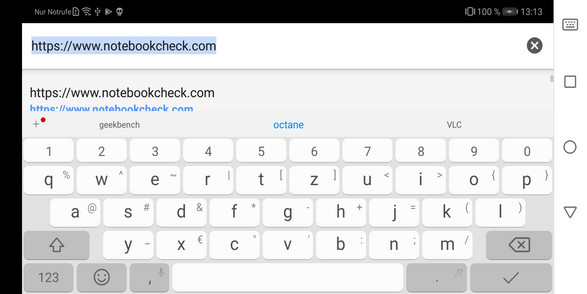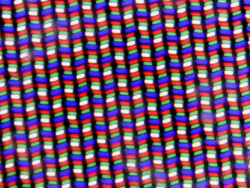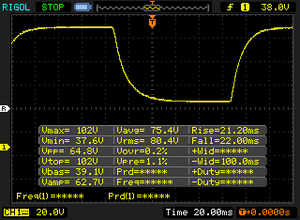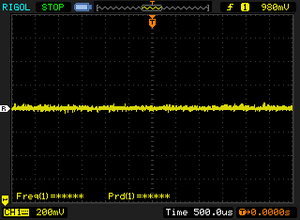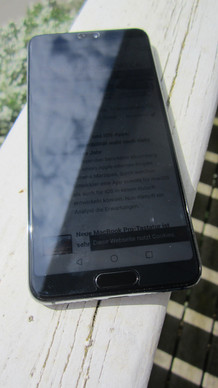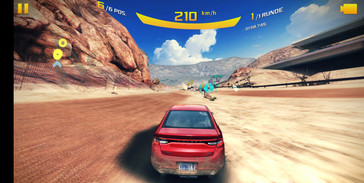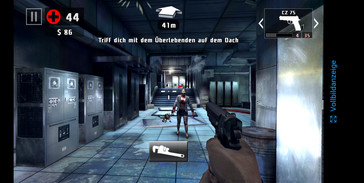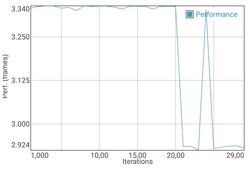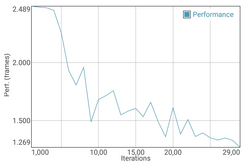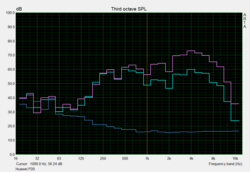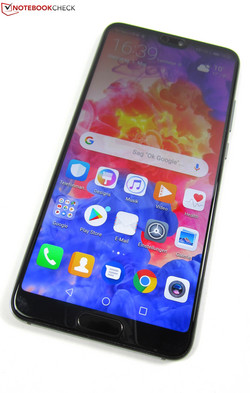Huawei P20 Smartphone Review
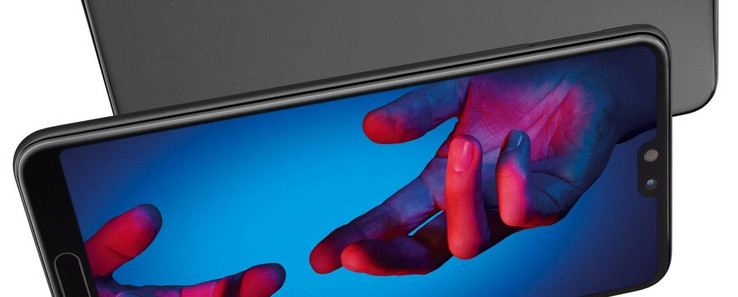
The successors to Huawei’s P10 series are about to launch and include many new features. Especially the camera modules are supposed to raise the bar and mark a new era for mobile photography. We did not see that during the review of the Huawei P20 Pro, but that the top model of the P20-series is equipped with a very good Leica triple camera, which is currently among the best in the smartphone segment. The low-light performance in particular creates wow-effects.
The small sibling of the Huawei 20 Pro is called Huawei P20 and is about 250 Euros less expensive. You still get a lot, despite the big price difference: a 5.8-inch high-end smartphone with HiSilicon SoC Kirin 970, the GPU ARM Mali-G72 MP12 and 4 GB RAM. The storage capacity is 128 GB and there is either one or two Nano-SIM slots depending on the model. The camera equipment of the Huawei P20 is not quite as extreme compared to the Huawei P20 Pro, but it is a Leica dual-camera consisting of a 12 MP RGB sensor and a 20 MP black/white sensor.
We want to see how the P20 fares against modern rivals, so we selected he following comparison devices with similar specs: Apple iPhone 8, Google Pixel 2, Huawei P10, Huawei P20 Pro, LG V30, and Samsung Galaxy S9. We also include the Huawei P20 Lite, the third and smallest model within Huaweis’s P20-series.
Case - Aluminum and Glass
The only visual difference between the Huawei P20 and the Huawei P20 Pro is the form factor. Similar to the high-end smartphone, the test model features a well-built chassis that combines aluminum and glass elements for a very solid unit. Even a lot of pressure is no problem. The tactile feeling of the Huawei P20 is great thanks to its smooth front and back as well as the rounded corners and edges. However, there is still some resistance, so it never feels like it is slipping out of your hands. The slightly protruding dual-camera module at the back, because it will always wobble a bit when you use it while it is lying on a surface.
The color choices of the Huawei P20 are once again similar to the Huawei P20 Pro. Besides the subtle “Black”, you also get the smartphone in the more striking colors “Midnight Blue” and “Pink Gold”. The latter is only available for the dual-SIM model. The Huawei P20 does not have the IP certification of the P20 Pro (IP67), but is only certified according to IP52.
Connectivity - USB-C 3.1 Gen.1, Desktop Mode
Huawei does not make compromises for the USB port: It does not only use a Type-C connector, but also supports USB 3.1 Gen.1, which means data can be transferred at up to 5 Gbps (in theory). The additional features are much more interesting though. You can connect the smartphone to a corresponding external display in the Desktop Mode via corresponding USB adapter for DisplayPort, Mini-DisplayPort or HDMI. You can, for instance, display different apps on the P20 and the external screen to extend the screen estate or use the smartphone as touchpad and replace the mouse and keyboard.
The Huawei P20 smartphone also supports wireless picture transfers via Miracast. Other wireless standards are WiFi-Direct, NFC, Bluetooth 4.2 with aptX-HD as well as WLAN 802.11 ac. The microSD slot, which is usually common on smartphones, is not available on the Huawei P20, but this should not be a huge deal considering the generous amount of internal storage. This leaves one slot at the left side of the chassis for either one or two Nano-SIM cards.
Software - Huawei P20 with the latest Android (8.1 Oreo)
Huawei equips the P20 with Android 8.1, the latest version of Google’s operating system. The manufacturer installs its familiar EMUI user interface, also in version 8.1. The security patch level was from March 1st 2018 as of the writing (beginning of May) and therefore still pretty up to date. There are some additional preinstalled apps besides the default Google stuff, but most of them can be deleted. This includes the apps in the folder “Top Apps” like eBay, Booking.com, and Netflix. You can use 116 GB of the 128 GB internal storage ex-works.
Communication and GPS - Downloads at up to 1.2 Gbps, fast Wi-Fi
The Huawei P20 covers a wide range of frequencies with 21 LTE bands and should get a signal in most parts of the world. It is a Cat. 18 LTE modem and supports downloads at up to 1.2 Gbps.
Short-range connections on the Huawei P20 can be established via Bluetooth 4.2, NFC, as well as the Wi-Fi standards 802.11 a/b/g/n/ac including MIMO technology. We checked the WLAN performance with our reference router Linksys EA8500. It receives data at up to 637 Mbps at a distance of one meter, which is basically identical to the Huawei P20 Pro. However, the performance is a bit lower when the smartphone sends data; the transfer rate drops to 397 Mbps and fluctuates quite a bit with values between 145 and 584 Mbps. We noticed a similar behavior when we reviewed the Huawei P20 Pro, but the fluctuations were lower and the transfer rate a bit higher.
The GPS module of the Huawei P20 works quickly and reliably. The location is accurate down to 6 meters indoors, and even down to 4 meters outdoors.
We check the performance of the GPS module in practical scenarios with a bicycle ride (9 km), and we compare the results with our professional navigation device Garmin Edge 500. All in all, the Huawei P20 is a bit less accurate than the Garmin Edge 500 and shows our location next to the actual track a couple of times. The deviations are pretty small though (within a couple of meters), so they do not matter for standard navigation purposes.
Telephone Functions and Voice Quality
The voice quality is good when you make calls with the Huawei P20. We tested calls both to landlines and mobile networks, and the voices of us and the called person were easy to understand at all times.
The dual-SIM version supports VoLTE and VoWiFi besides LTE for both SIM cards, so uses can make calls and use data services (4G for VoLTE, WLAN for VoWiFi) simultaneously.
Cameras - the "Huawei Leica" takes high-quality pictures
Huawei uses the notch we know from the Apple iPhone X for the front camera of the P20. It takes pictures at up to 24 MP and offers all the selfie modes you want starting from portrait mode with Bokeh and beauty effects all the way up to a Pro mode, where you can adjust all the important aspects by yourself. Overall, you get a total of 17 different modes.
However, the interesting camera is located at the back, a Leica dual-camera, which combines a 12 MP RGB sensor (f/1.8) and a 20 MP monochrome sensor (f/1.6). The latter is also fitted to the Huawei P20 Pro and can also be used to improve the shots of the color sensor by feeding additional brightness information. Especially low-light pictures benefit from that, for example our test scene number 3. Even fine details are still visible here and there is much less picture noise compared to the Apple iPhone X or the Google Pixel 2, for example. The Huawei camera also features a night mode which supports up to 6 seconds long exposures via AIS stabilization without a tripod. The smartphone also includes a 2x hybrid zoom, while the Huawei P20 Pro features a 5x hybrid zoom.
You can setup the picture size up to 20 MB in the settings of the Huawei P20. However, we preferred the default setting of 12 MP – the resolution of the RGB sensor. You can increase the picture size in good lighting conditions without any quality drops. Test scenes 1 and 2 show that the Leica dual-camera offers excellent picture quality in daylight, which is a result of AI algorithms. They automatically try to get the best picture quality in the background. The selected motif is analyzed in real-time, for example, so the camera settings can be adjusted. The front camera records videos at up to 30 FPS in 4K, and up to 60 FPS in 1080p. The video quality is decent in both cases, but cannot match the quality of the pictures.
Colors look pretty natural on the Huawei P20 pictures, although they tend to be a bit too saturated. The smartphone performs really well when we take a picture of our test chart, which is very clean even up into the corners. Edges and color transitions are no problem for the camera sensor, only fonts are slightly frayed.
Accessories and Warranty
Huawei ships the P20 with the modular quick-charge power adapter (5V, 2A), a USB-C adapter for the 3.5 mm stereo jack, a headset, a USB cable (type C to type A), a protective case, a SIM tool, a quick-start guide, and a warranty card. Huawei does not offer any dedicated accessories on its website.
The warranty period for the P20 smartphone is 24 months. Please see our Guarantees, Return policies and Warranties FAQ for country-specific information.
Input Devices & Handling
The 5.8-inch IPS display of the Huawei P20 recognizes up to 10 finger inputs simultaneously and even executes inputs in the corners very reliably. You can hide the notch at the upper display edge in the settings. It will pull down the upper edge and make it black, so the notch is not visibly anymore, but symmetrical.
Swiftkey is the default keyboard, but you can also use any other layout available in the app store. Huawei placed the fingerprint scanner at the front underneath the display, and it always worked reliably during the review period. You can also configure the fingerprint scanner in the settings and let it replace the other Android buttons, so you can operate the smartphone with one hand.
There are more comfort features like a glove mode as well as movement control. This includes knuckle gestures for taking screenshots or share the display, for example. You can also activate functions like “holding to ear” to accept calls when you lift the smartphone. All the apps are visible on the launch screen by default, but you can activate the regular app drawer in the settings.
Display - Bright IPS panel with excellent colors
Contrary to the 6.1-inch Huawei P20 Pro, the Huawei P20 only gets a 5.8-inch screen. Both displays still feature the same resolution (2240 x 1080 pixels), so the pixel density is higher compared to the high-end model (429 vs. 408 PPI). This means even crisper images, but you cannot see a difference between the two with the naked eye. The differences in terms of colors on the other hand are very easy to see.
While the Huawei P20 Pro is equipped with a brilliant OLED screen, the "small" P20 only gets an IPS panel (more precisely: an RGBW-LTPS display, which was first introduced on the Huawei P9), which provides slightly paler colors due to its design. However, the measurements like the black value of 0.37 cd/m² and the contrast ratio of 2035:1 are excellent for an IPS screen, just like the very even brightness distribution of 96 percent.
We measure an average luminance of 748.3 nits on a pure white background, so the Huawei P20 is one of the best comparison devices for outdoor purposes. Only the Apple iPhone 8 is similarly bright. The brightness is even increased up to 752 nits with an even distribution of bright and dark contents (APL50). We still measure good 498 nits when the brightness sensor is turned off. The smartphone is also flexible in the other direction with a minimum luminance of 1.99 nits, so it is very comfortable to use in complete darkness.
Besides a blue light filter, which filters long wavelengths out of the picture and protects the eyes, you will also find an option called “Natural Colors” in the settings. This feature reminds us of Apple’s True Tone, and the smartphone automatically adjusts the color temperature to the ambient light, which improves the viewing experience.
| |||||||||||||||||||||||||
Brightness Distribution: 96 %
Center on Battery: 753 cd/m²
Contrast: 2035:1 (Black: 0.37 cd/m²)
ΔE Color 1.3 | 0.5-29.43 Ø5
ΔE Greyscale 1.7 | 0.57-98 Ø5.3
99.7% sRGB (Calman 2D)
Gamma: 2.18
| Huawei P20 LTPS, 2240x1080, 5.80 | Apple iPhone 8 IPS True Tone, 1334x750, 4.70 | Google Pixel 2 AMOLED, 1920x1080, 5.00 | Huawei P10 LTPS, 1920x1080, 5.10 | Huawei P20 Lite IPS, 2280x1080, 5.84 | Huawei P20 Pro OLED, 2240x1080, 6.10 | LG V30 OLED, 2880x1440, 6.00 | Samsung Galaxy S9 Super AMOLED, 2960x1440, 5.80 | |
|---|---|---|---|---|---|---|---|---|
| Screen | -11% | -30% | -104% | -122% | -6% | -133% | -23% | |
| Brightness middle | 753 | 604 -20% | 396 -47% | 547 -27% | 528 -30% | 569 -24% | 432 -43% | 529 -30% |
| Brightness | 748 | 580 -22% | 404 -46% | 556 -26% | 525 -30% | 578 -23% | 428 -43% | 527 -30% |
| Brightness Distribution | 96 | 91 -5% | 91 -5% | 86 -10% | 89 -7% | 95 -1% | 87 -9% | 96 0% |
| Black Level * | 0.37 | 0.44 -19% | 0.43 -16% | 0.51 -38% | ||||
| Contrast | 2035 | 1373 -33% | 1272 -37% | 1035 -49% | ||||
| Colorchecker dE 2000 * | 1.3 | 1.2 8% | 1.7 -31% | 4.8 -269% | 4.7 -262% | 1.3 -0% | 4.18 -222% | 1.4 -8% |
| Colorchecker dE 2000 max. * | 2.3 | 2.3 -0% | 4 -74% | 8.8 -283% | 8.9 -287% | 2.1 9% | 8.53 -271% | 4 -74% |
| Greyscale dE 2000 * | 1.7 | 1.6 6% | 1.3 24% | 4.5 -165% | 6.4 -276% | 1.6 6% | 5.3 -212% | 1.6 6% |
| Gamma | 2.18 101% | 2.25 98% | 2.3 96% | 2.39 92% | 2.22 99% | 2.31 95% | 2.33 94% | 2.16 102% |
| CCT | 66.76 9736% | 6688 97% | 6483 100% | 7194 90% | 7987 81% | 6401 102% | 7487 87% | 6358 102% |
* ... smaller is better
The default color mode of the Huawei P20 is Vivid with the color temperature setting Standard. The color mode can be switched to Normal and the color temperature either to Warm or Cold, so there are six possible combinations. We had a closer look at three of them – Normal/Standard, Normal/Warm, as well as the default setting Vivid/Standard.
We recommend the setting Normal/Standard for accurate colors, where the Huawei P20 manages very low DeltaE values of 2.3 (colors) and 1.3 (grayscale) – so you cannot see any deviations compared to the ideal colors. Both the color temperature (6676 K) as well as the gamma value (2.18) are close to perfect as well. Not many smartphones manage such accurate pictures; laudable exceptions are the Huawei P20 Pro and the Apple iPhone 8, for example.
Display Response Times
| ↔ Response Time Black to White | ||
|---|---|---|
| 21.6 ms ... rise ↗ and fall ↘ combined | ↗ 8.4 ms rise | |
| ↘ 13.2 ms fall | ||
| The screen shows good response rates in our tests, but may be too slow for competitive gamers. In comparison, all tested devices range from 0.1 (minimum) to 240 (maximum) ms. » 41 % of all devices are better. This means that the measured response time is similar to the average of all tested devices (21.5 ms). | ||
| ↔ Response Time 50% Grey to 80% Grey | ||
| 43.2 ms ... rise ↗ and fall ↘ combined | ↗ 21.2 ms rise | |
| ↘ 22 ms fall | ||
| The screen shows slow response rates in our tests and will be unsatisfactory for gamers. In comparison, all tested devices range from 0.2 (minimum) to 636 (maximum) ms. » 68 % of all devices are better. This means that the measured response time is worse than the average of all tested devices (33.7 ms). | ||
Screen Flickering / PWM (Pulse-Width Modulation)
| Screen flickering / PWM not detected | |||
In comparison: 53 % of all tested devices do not use PWM to dim the display. If PWM was detected, an average of 17903 (minimum: 5 - maximum: 3846000) Hz was measured. | |||
Thanks to its bright screen and the IPS display with wide viewing angles, the Huawei P20 works great outdoors. The only problem is direct sunlight, otherwise the visibility is very good. This also applies when you look at the display from the side. Content is still very easy to read and there is only a minor discoloration from very flat angles, but it is not distracting.
Performance - Just as fast as the top model Huawei P20 Pro
The Huawei P20 gets the same high-end hardware Huawei uses for the Huawei P20 Pro. Both smartphones use the HiSilicon Kirin 970, a high-end octa-core SoC released mid last year. The graphics adapter ARM Mali-G72 MP12 is in the same performance class. The only difference in the specs is the amount of memory: 6 GB on the P20 Pro, 4 GB on the Huawei P20. However, you will not notice any difference in practice or the synthetic benchmarks.
The Huawei P20 not only manages a very good system performance, but is also basically on par with the Huawei P20 Pro in every synthetic benchmark. There are still faster devices like the Apple iPhone 8 with the Apple A11 Bionic and the Samsung Galaxy S9 with Samsung’s own Exynos 9810 SoC. The much less powerful Huawei P20 Lite with mainstream hardware is far behind.
| AnTuTu v6 - Total Score (sort by value) | |
| Huawei P20 | |
| Apple iPhone 8 | |
| Google Pixel 2 | |
| Huawei P10 | |
| Huawei P20 Lite | |
| Huawei P20 Pro | |
| LG V30 | |
| Samsung Galaxy S9 | |
| Average HiSilicon Kirin 970 (173653 - 181973, n=8) | |
| AnTuTu v7 - Total Score (sort by value) | |
| Huawei P20 | |
| Google Pixel 2 | |
| Huawei P10 | |
| Huawei P20 Lite | |
| Huawei P20 Pro | |
| Samsung Galaxy S9 | |
| Average HiSilicon Kirin 970 (152773 - 212278, n=6) | |
The preloaded browser on the Huawei P20 is Chrome – version 66.0.3359.126 at the time of the review – ensures quick web browsing. It is still not enough for the top spot in the browser benchmarks, because the JavaScript performance is just average in JetStream 1.1, Octane 2.0, and Mozilla Kraken 1.1. Both the Google Pixel 2 and the Samsung Galaxy S9 are faster, while the Huawei P20 Pro is once again not faster than the Huawei P20. The Apple iPhone 8 is the fastest browsing smartphone by some margin.
| JetStream 1.1 - Total Score | |
| Apple iPhone 8 | |
| Average of class Smartphone (last 2 years) | |
| Samsung Galaxy S9 (Samsung Browser 7.0) | |
| Google Pixel 2 (Chrome 62) | |
| Huawei P20 Pro (Chrome 65) | |
| Huawei P10 (Chrome 56) | |
| Huawei P20 (Chrome 66.0.3359.126) | |
| LG V30 (Chrome 62) | |
| Average HiSilicon Kirin 970 (33.1 - 58.6, n=8) | |
| Huawei P20 Lite (Chrome 63) | |
| Octane V2 - Total Score | |
| Apple iPhone 8 | |
| Average of class Smartphone (2228 - 89112, n=214, last 2 years) | |
| Samsung Galaxy S9 (Samsung Browser 7.0) | |
| Huawei P20 Pro (Chrome 65) | |
| Huawei P20 (Chrome 66.0.3359.126) | |
| Google Pixel 2 (Chrome 62) | |
| LG V30 (Chrome 62) | |
| Huawei P10 (Chrome 56) | |
| Average HiSilicon Kirin 970 (6692 - 11838, n=8) | |
| Huawei P20 Lite | |
| Mozilla Kraken 1.1 - Total | |
| Huawei P20 Lite (Chrome 63) | |
| Average HiSilicon Kirin 970 (3591 - 6221, n=8) | |
| Huawei P20 (Chrome 66.0.3359.126) | |
| Huawei P20 Pro (Chrome 65) | |
| LG V30 (Chrome 62) | |
| Google Pixel 2 (Chrome 62) | |
| Huawei P10 (Chrome 56) | |
| Samsung Galaxy S9 (Samsung Browser 7.0) | |
| Average of class Smartphone (388 - 9999, n=173, last 2 years) | |
| Apple iPhone 8 | |
| WebXPRT 2015 - Overall | |
| Apple iPhone 8 | |
| Google Pixel 2 (Chrome 62) | |
| Huawei P20 Pro (Chrome 65) | |
| Huawei P20 (Chrome 66.0.3359.126) | |
| Average HiSilicon Kirin 970 (119 - 187, n=8) | |
| Samsung Galaxy S9 (Samsung Browser 7.0) | |
| LG V30 (Chrome 62) | |
| Huawei P10 (Chrome 56) | |
| Huawei P20 Lite (Chrome 63) | |
* ... smaller is better
The read and write performance of the two Huawei smartphones is once again comparable since both the P20 and Huawei P20 Pro use UFS 2.1 storage. The previous model Huawei P10 is almost on par. Google's Pixel 2 and the Samsung Galaxy S9 also manage decent read/write performance figures, but fall behind the three Huaweis in the 4K Random Read test.
| Huawei P20 | Google Pixel 2 | Huawei P10 | Huawei P20 Lite | Huawei P20 Pro | LG V30 | Samsung Galaxy S9 | Average 128 GB UFS 2.1 Flash | Average of class Smartphone | |
|---|---|---|---|---|---|---|---|---|---|
| AndroBench 3-5 | -20% | -1% | -46% | 0% | -40% | -23% | 8% | 174% | |
| Sequential Read 256KB | 827 | 758 -8% | 738 -11% | 293.9 -64% | 832 1% | 669 -19% | 815 -1% | 760 ? -8% | 1508 ? 82% |
| Sequential Write 256KB | 193.6 | 196.2 1% | 189.8 -2% | 198.3 2% | 196.7 2% | 193.2 0% | 206.9 7% | 297 ? 53% | 1118 ? 477% |
| Random Read 4KB | 147 | 173.1 18% | 168.4 15% | 48.19 -67% | 144.3 -2% | 78.2 -47% | 131 -11% | 152.9 ? 4% | 247 ? 68% |
| Random Write 4KB | 161.5 | 18.03 -89% | 152.3 -6% | 71.1 -56% | 160.5 -1% | 10.21 -94% | 23.07 -86% | 131.6 ? -19% | 272 ? 68% |
| Sequential Read 256KB SDCard | 54.2 ? | 83.5 ? | 62.8 | 79.2 ? | 76 ? | ||||
| Sequential Write 256KB SDCard | 32.19 ? | 69 ? | 47.2 | 67.2 ? | 59.6 ? |
Games - Smooth, but the response times are a bit high
The graphics calculations of the Huawei P20 are handled by the ARM GPU Mali-G72 MP12. The high-end GPU is very fast and handles smooth gameplay in all tested games even at maximum settings – and this should not change for upcoming games. All the sensors as well as the speaker at the bottom also work well. The latter provides a spatial sound impression when held in landscape mode. The sound is slightly stronger on the left or right side, respectively, depending on the orientation. It is not distracting when you play games though.
We did not have problems with the long response times, either (21.6 ms black-to-white, 43.2 ms gray-to-gray). Gaming enthusiasts should still test it before they buy the Huawei P20.
| Dead Trigger 2 | |||
| Settings | Value | ||
| high | 59 fps | ||
| Asphalt 8: Airborne | |||
| Settings | Value | ||
| high | 30 fps | ||
Emission - Cool, but throttling under load
Temperature
The Huawei P20 only gets lukewarm under load at up to 36.7 °C and can be held in the hands without any discomfort. However, the GFXBench battery test shows that the smartphone has to apply some tricks for the heat dissipation.
Both the T-Rex benchmark as well as the more demanding Manhattan benchmark, which render the same scene thirty times in a row, results in throttling. The Huawei P20 reduces its performance after 20 runs in the T-Rex benchmark, but the drop of the frame rate is very small. This changes a bit in the Manhattan benchmark, where the smartphone throttles much sooner. The frame rate starts to drop after 4 runs and is down to half of the original frame rate after 30 runs.
(+) The maximum temperature on the upper side is 36.7 °C / 98 F, compared to the average of 35 °C / 95 F, ranging from 21.9 to 56 °C for the class Smartphone.
(+) The bottom heats up to a maximum of 35.9 °C / 97 F, compared to the average of 33.8 °C / 93 F
(+) In idle usage, the average temperature for the upper side is 26.7 °C / 80 F, compared to the device average of 32.7 °C / 91 F.
Speaker
The speaker of the Huawei P20, which is located next to the USB port, creates a pretty balanced sound that does not distort at high volumes. Bass is hardly present, but there is a bit too much emphasis on the high tones.
Similar to the Huawei P20 Pro, there is no 3.5 mm stereo jack at the P20. You can still attach headsets via USB-C thanks to the provided adapter, where you can enjoy Dolby Atmos optimized sound. The Huawei P20 also support aptX-HD for the transmission of HD audio signals via Bluetooth.
Huawei P20 audio analysis
(±) | speaker loudness is average but good (79.8 dB)
Bass 100 - 315 Hz
(±) | reduced bass - on average 14% lower than median
(±) | linearity of bass is average (11.8% delta to prev. frequency)
Mids 400 - 2000 Hz
(+) | balanced mids - only 3% away from median
(±) | linearity of mids is average (10.4% delta to prev. frequency)
Highs 2 - 16 kHz
(±) | higher highs - on average 8.5% higher than median
(±) | linearity of highs is average (8.5% delta to prev. frequency)
Overall 100 - 16.000 Hz
(±) | linearity of overall sound is average (21.7% difference to median)
Compared to same class
» 37% of all tested devices in this class were better, 8% similar, 55% worse
» The best had a delta of 12%, average was 38%, worst was 134%
Compared to all devices tested
» 56% of all tested devices were better, 7% similar, 36% worse
» The best had a delta of 4%, average was 25%, worst was 134%
Huawei P20 Lite audio analysis
(+) | speakers can play relatively loud (84.1 dB)
Bass 100 - 315 Hz
(-) | nearly no bass - on average 25% lower than median
(±) | linearity of bass is average (9.4% delta to prev. frequency)
Mids 400 - 2000 Hz
(+) | balanced mids - only 4.4% away from median
(±) | linearity of mids is average (8.7% delta to prev. frequency)
Highs 2 - 16 kHz
(±) | higher highs - on average 10.5% higher than median
(+) | highs are linear (3.4% delta to prev. frequency)
Overall 100 - 16.000 Hz
(±) | linearity of overall sound is average (25.5% difference to median)
Compared to same class
» 58% of all tested devices in this class were better, 8% similar, 35% worse
» The best had a delta of 12%, average was 38%, worst was 134%
Compared to all devices tested
» 75% of all tested devices were better, 5% similar, 20% worse
» The best had a delta of 4%, average was 25%, worst was 134%
Huawei P20 Pro audio analysis
(+) | speakers can play relatively loud (84.9 dB)
Bass 100 - 315 Hz
(-) | nearly no bass - on average 21% lower than median
(±) | linearity of bass is average (9.5% delta to prev. frequency)
Mids 400 - 2000 Hz
(±) | higher mids - on average 5% higher than median
(±) | linearity of mids is average (7.2% delta to prev. frequency)
Highs 2 - 16 kHz
(±) | higher highs - on average 5.6% higher than median
(+) | highs are linear (4.5% delta to prev. frequency)
Overall 100 - 16.000 Hz
(±) | linearity of overall sound is average (20.1% difference to median)
Compared to same class
» 26% of all tested devices in this class were better, 9% similar, 65% worse
» The best had a delta of 12%, average was 38%, worst was 134%
Compared to all devices tested
» 46% of all tested devices were better, 8% similar, 45% worse
» The best had a delta of 4%, average was 25%, worst was 134%
Battery Runtime - Lasts 2 days, quick-charger included
Power Consumption
The Huawei P20 is generally an efficient device with an average idle consumption of 2.05 W and 6.15 W under load, but this cannot impress the competition: Only the Huawei P10 consumes even more power, while the rivals like the Huawei P20 Pro and the Samsung Galaxy S9 can be much more efficient. However, high consumption values are not always an indicator for short battery runtimes.
| Off / Standby | |
| Idle | |
| Load |
|
| Huawei P20 3400 mAh | Apple iPhone 8 1821 mAh | Google Pixel 2 2700 mAh | Huawei P10 3200 mAh | Huawei P20 Lite 3000 mAh | Huawei P20 Pro 4000 mAh | LG V30 3300 mAh | Samsung Galaxy S9 3000 mAh | Average HiSilicon Kirin 970 | Average of class Smartphone | |
|---|---|---|---|---|---|---|---|---|---|---|
| Power Consumption | 24% | 12% | -10% | 5% | 31% | 21% | 36% | -10% | 5% | |
| Idle Minimum * | 0.67 | 0.54 19% | 0.99 -48% | 0.83 -24% | 0.98 -46% | 0.84 -25% | 0.72 -7% | 0.65 3% | 0.978 ? -46% | 0.897 ? -34% |
| Idle Average * | 2.05 | 1.63 20% | 1.35 34% | 2.1 -2% | 2 2% | 1.54 25% | 1.37 33% | 0.81 60% | 2.12 ? -3% | 1.452 ? 29% |
| Idle Maximum * | 2.11 | 1.67 21% | 1.37 35% | 2.18 -3% | 2.11 -0% | 1.57 26% | 1.41 33% | 0.92 56% | 2.51 ? -19% | 1.629 ? 23% |
| Load Average * | 6.15 | 2.74 55% | 3.25 47% | 6.57 -7% | 3.9 37% | 2.47 60% | 3.46 44% | 4.76 23% | 5.01 ? 19% | 5.55 ? 10% |
| Load Maximum * | 8.09 | 7.78 4% | 8.56 -6% | 9.32 -15% | 5.62 31% | 2.49 69% | 7.83 3% | 5.16 36% | 8.1 ? -0% | 8.31 ? -3% |
* ... smaller is better
Battery Runtime
We just saw that the Huawei P20 is not the most efficient smartphone, but the performance in practical situations is more important. The situation changes when it comes to the runtimes, because the P20 manages the longest results in combination with the Huawei P20 Pro and the LG V30. The test device only shuts down after about 13.5 hours both in the WLAN browsing as well as the video test, which should be sufficient for two days. Devices like the Apple iPhone 8, the Google Pixel 2, and the Samsung Galaxy S9 have to be recharged much sooner.
Good: Contrary to some other manufacturers, Huawei does not cut costs in terms of PSU performance. The provided quick-charger (Huawei SuperCharge, 5V/2A, 4.5V/5A, 5V/4.5A) is quite bulky at 9 x 4.5 cm, but charges the P20 very quickly. The battery capacity is back to 75 % after just 40 minutes, and the 100 % mark is reached after about 90 minutes.
| Huawei P20 3400 mAh | Apple iPhone 8 1821 mAh | Google Pixel 2 2700 mAh | Huawei P10 3200 mAh | Huawei P20 Lite 3000 mAh | Huawei P20 Pro 4000 mAh | LG V30 3300 mAh | Samsung Galaxy S9 3000 mAh | |
|---|---|---|---|---|---|---|---|---|
| Battery Runtime | -22% | -32% | -17% | -37% | -1% | -3% | -37% | |
| Reader / Idle | 1888 | 1629 -14% | 1457 -23% | 1540 -18% | 750 -60% | 1727 -9% | 1914 1% | 1182 -37% |
| H.264 | 810 | 698 -14% | 564 -30% | 582 -28% | 470 -42% | 784 -3% | 822 1% | 609 -25% |
| WiFi v1.3 | 818 | 585 -28% | 575 -30% | 966 18% | 582 -29% | 744 -9% | 774 -5% | 474 -42% |
| Load | 295 | 202 -32% | 161 -45% | 176 -40% | 247 -16% | 345 17% | 267 -9% | 164 -44% |
Pros
Cons
Verdict
The Huawei P20 is a very good high-end smartphone and ticks a lot of right boxes. Besides the excellent system performance, the 5.8-inch smartphone convinces with good build quality, the latest Android OS, and a bright display. The latter features precise colors and is special thanks to its unusual aspect ratio of 18.7:9 (2240 x 1080 pixels). LTE Cat. 18, the USB-C port with USB 31. Gen. 1 functionality, long battery runtimes, the provided quick-charge PSU, and in our case a dual-SIM module with dual-VoLTE/VoWiFi are other advantages.
The Huawei P20 has one of the best smartphone cameras you can get right now. The Huawei P20 Pro is even (slightly) better, but is 250 Euros more expensive.
We want to mention one particular advantage: Thanks to its Leica dual-camera, the Huawei P20 takes excellent pictures without much effort from the user – just aim and shoot, the camera AI takes care of the rest. The “small” Huawei is definitely a recommendation for camera enthusiasts, even though the Huawei P20 Pro even offers more features with its Leica triple-camera. However, the top model is about 250 Euros more expensive than the P20 and is not any faster since both smartphones are equipped with the identical Kirin SoC.
There are still some drawbacks. We missed an IP certification for the Huawei P20, which is available on the water and dust proof Huawei P20 Pro (IP67). Not every user will like the decision to remove both the microSD slot as well as the 3.5 mm headphone jack.
Huawei P20
-
05/04/2018 v6(old)
Manuel Masiero


 Deutsch
Deutsch English
English Español
Español Français
Français Italiano
Italiano Nederlands
Nederlands Polski
Polski Português
Português Русский
Русский Türkçe
Türkçe Svenska
Svenska Chinese
Chinese Magyar
Magyar